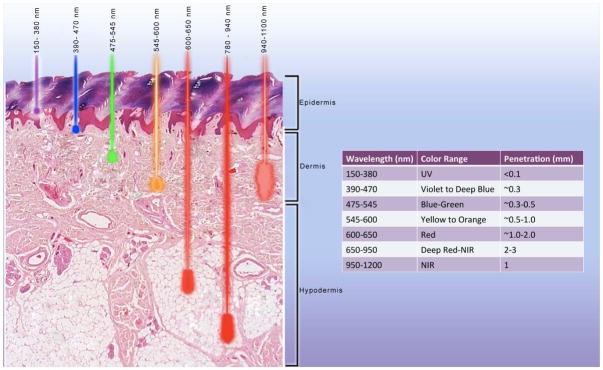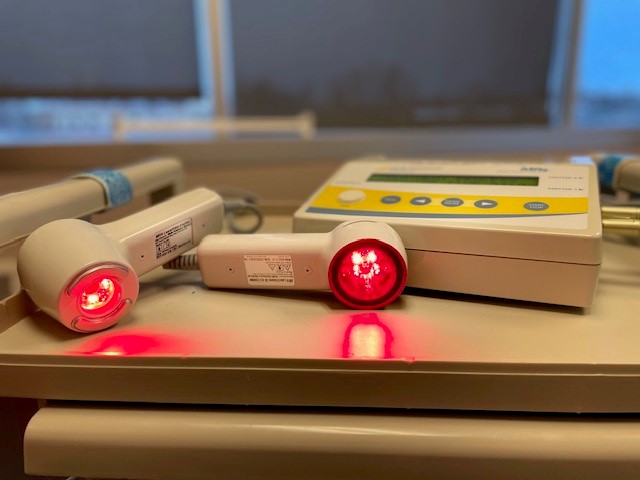What is laser therapy, and what does it do?
Low level laser therapy (LLLT) is a therapeutic treatment modality that uses near infrared (NIR) light to treat various conditions. LLLT can be used to treat tissue healing, swelling, pain, or even hair loss! LLLT was first discovered in the 1960s and has since gained popularity as a non-invasive treatment done at home or in a clinic. The way LLLT works may be confusing and can require a strong awareness of physics/chemistry to understand its mechanisms of action. The purpose of this blog is to simplify, in laymen’s terms, how and why LLLT may be an effective treatment modality.
Understanding your skin
First off, it helps to have an understanding of each layer of the skin. The epidermis is the outermost layer of the skin that provides a barrier to the outside world. It protects us from things like water, bacteria, and ultraviolet radiation from the sun. The next layer is the dermis, which contains connective tissues, hair follicles, sweat and sebaceous (oil) glands, and blood vessels. The final layer is the hypodermis, which contains connective tissue and fat cells.

What does Laser Therapy do to your tissue?
LLLT works through a process called photobiomodulation. This process occurs when the energy produced from the light source causes changes in the tissue cells. Remember in high school biology class learning about mitochondria, the powerhouse of the cell? Tissue is out of sync when it is damaged, swollen, or bruised. The body likes to maintain a level of homeostasis; all of the components of the machine (AKA our body) are working in harmony. The mitochondria are most active when cells are healthy and functioning normally. Things like tissue damage, swelling or scarring can cause dysregulation in the way the cells function. The purpose of photobiomodulation is to restore homeostasis and to help reinvigorate the cells normal activity.
The photons from the NIR light energy are absorbed by the cells and stimulates the mitochondria. This creates a cascade effect where nitrous oxide is removed from the cells allowing for increased:
- Enzyme activity
- Electrolyte flow
- Mitochondria respiration
- The production of adenosine triphosphate (ATP), or fuel for the cell
It also stimulates cellular growth, tissue repair, and edema reduction. It is plain to see that NIR treatment has many benefits without side effects.
Now you have a basic understanding of how LLLT treatment works!
Laser Therapy in our clinic
There are many different LLLT machines available on the market. There are units you can use at home or more expensive varieties you may find at your local clinic. Generally, the more expensive the unit the more control you have over adjusting the parameters. Some units come with an E-stim component that uses gentle electrical stimulation for pain relief. Pictured blow is an example of a LLLT unit that is available at Alaska Hand Rehabilitation. This unit has two heads, a shower head and an E-stim head. Both heads may be used simultaneously or independently depending on the treatment goal.

Let’s sum it up!
In summary, LLLT is an effective, painless and non-invasive treatment modality that is useful for tissue healing, swelling reduction and pain relief. If you are interested in receiving laser therapy, please contact our office to set up an appointment with one of our therapists.

